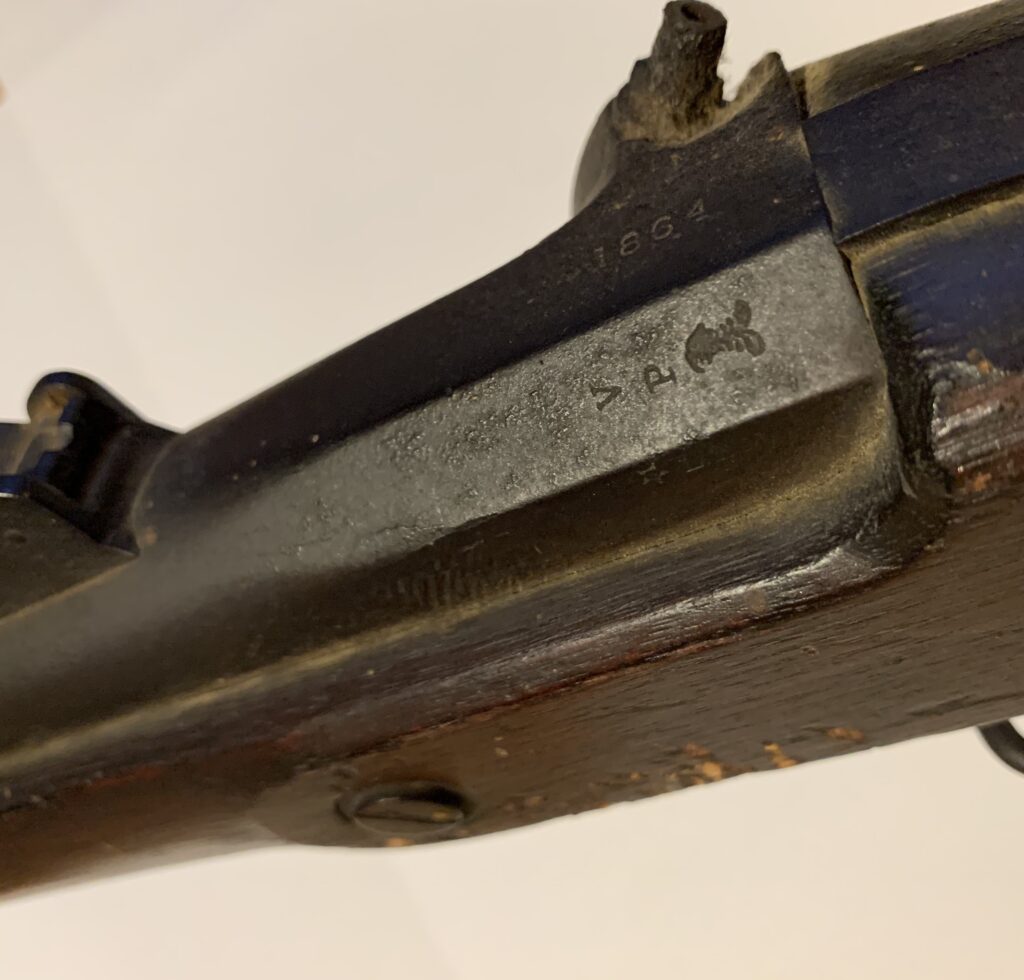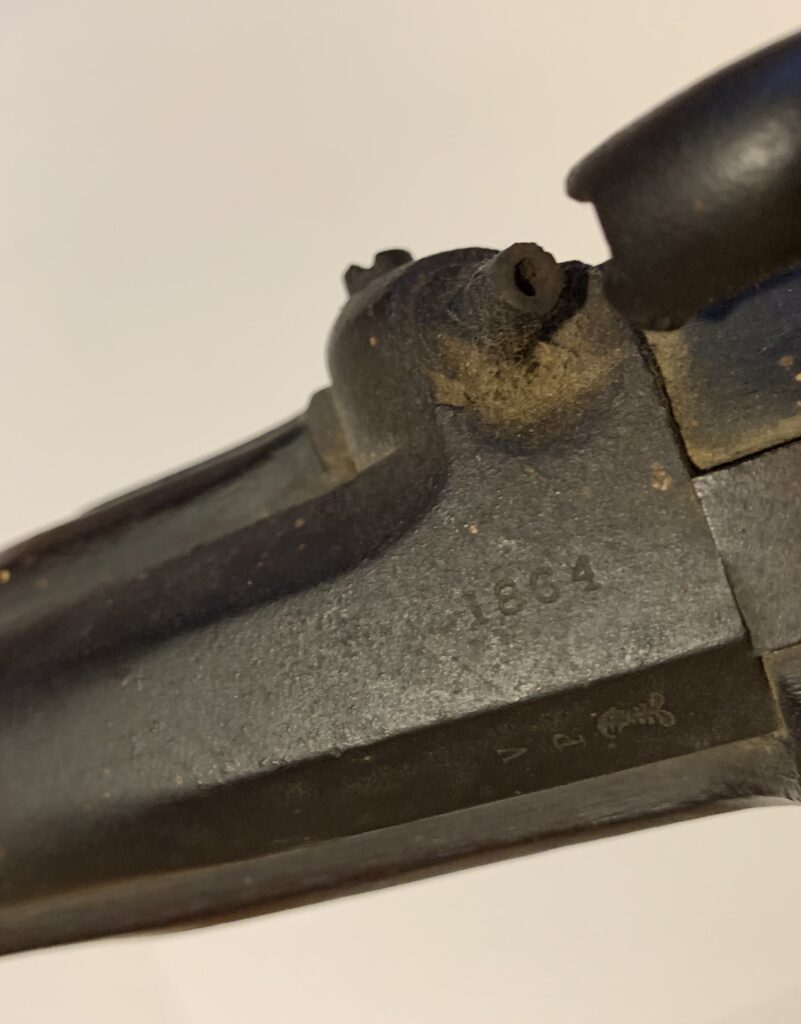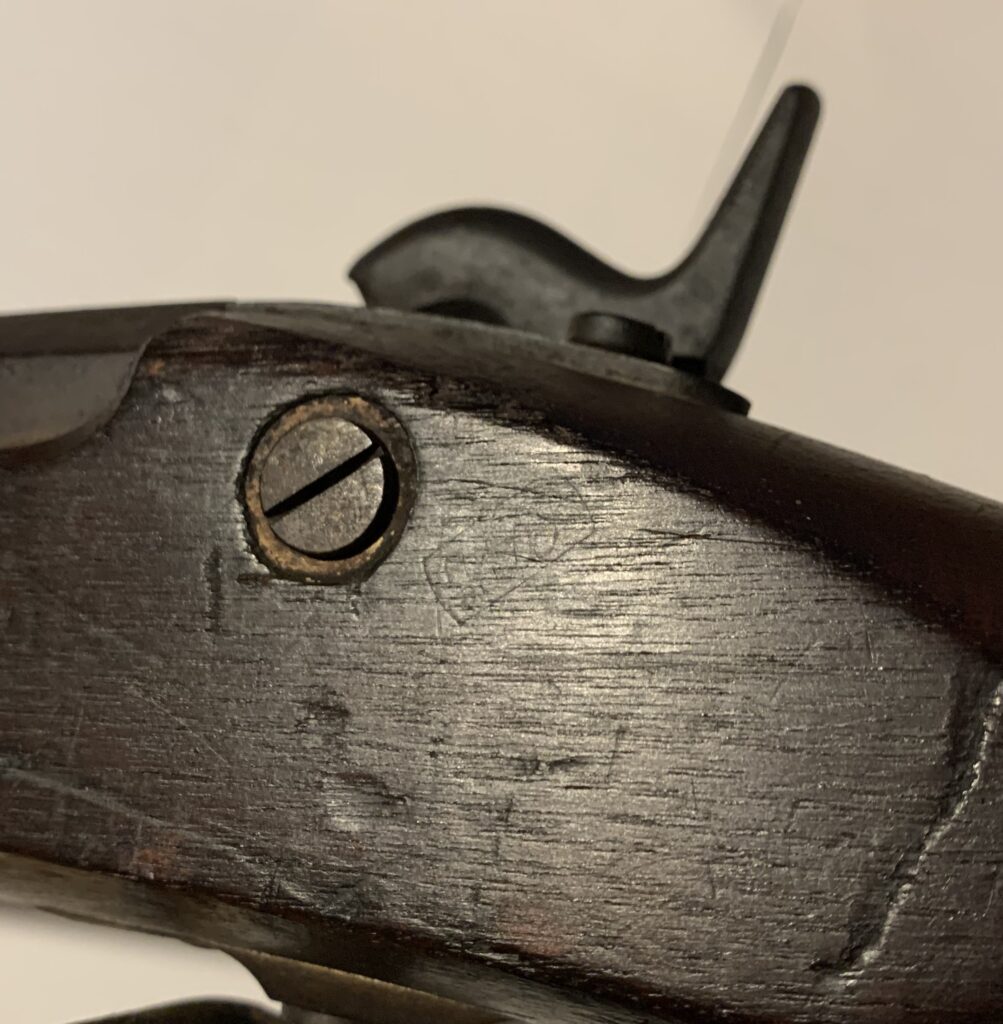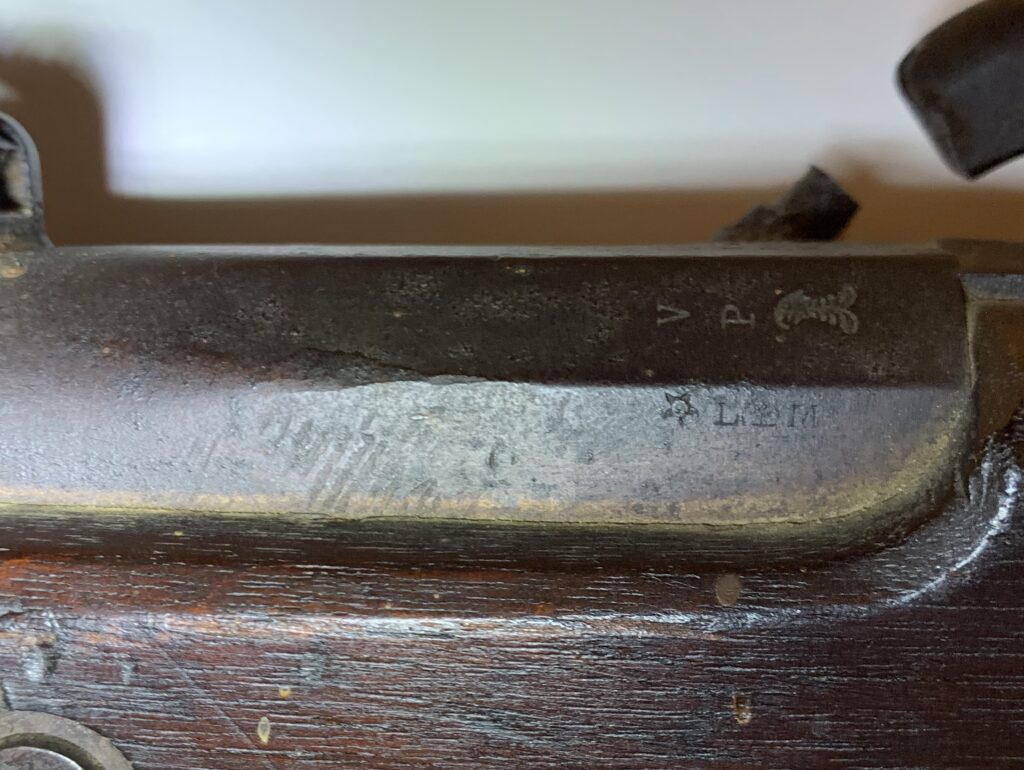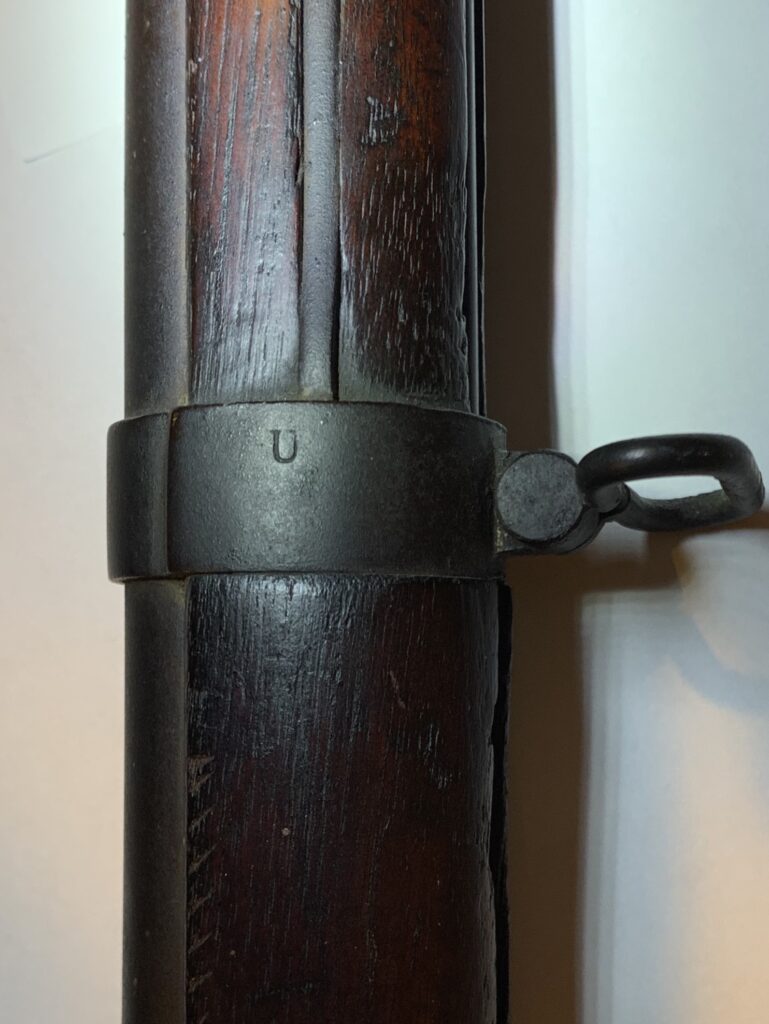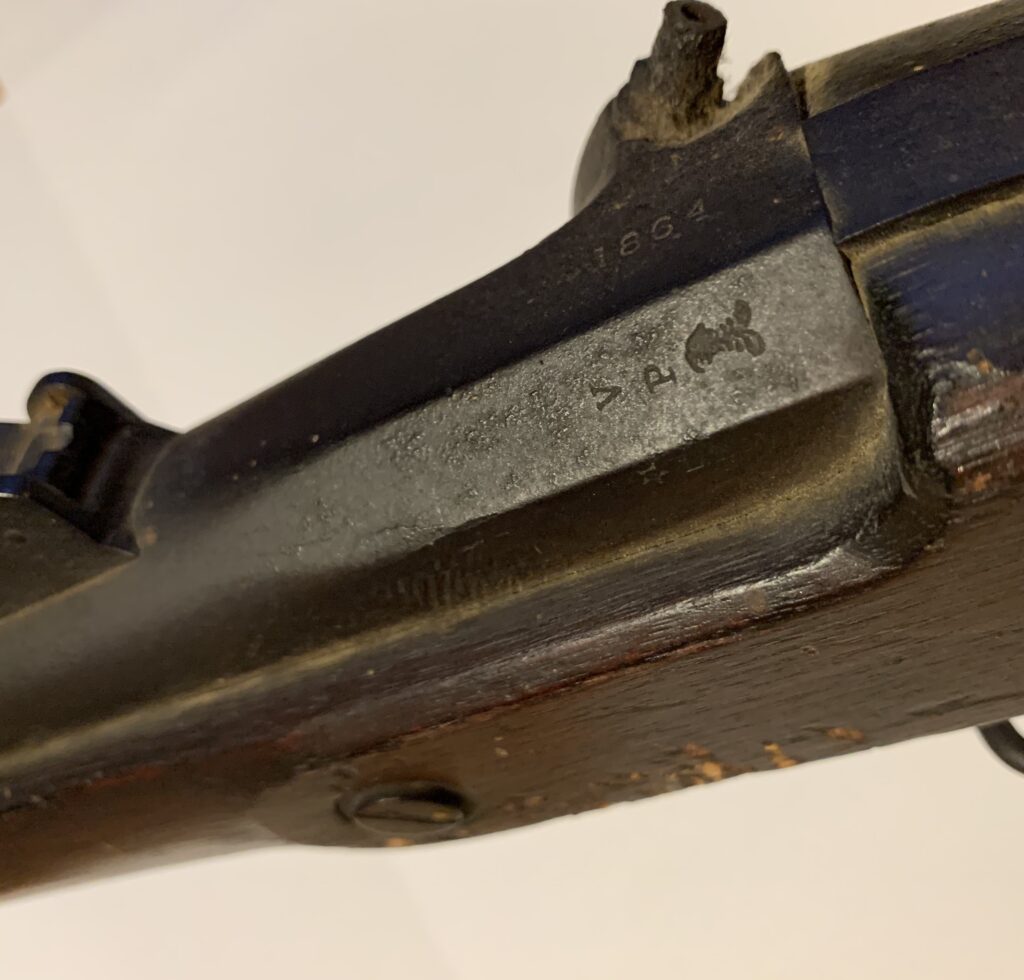This Civil War musket that has been in my family for over five generations. It is an 1864 Edward Robinson, New York City Contract Civil War Musket with bayonet. This was the musket of my great great grandfather, William J Griffis. Since he enlisted in the Union army in 1862, it is not known what firearms he used prior to obtaining this musket.

This musket was made by Edward Robinson who was one of the principle contractors of the Union Arms Company. This company had combined contracts of 90,000 rifle-muskets as of January 3, 1862. According to Moller in his text on American Military Shoulder Arms [1],
“Edward Robinson was credited with deliveries of 30,000 rifle-muskets to the Ordnance Dept between 1863 and 1865” .
When the American Civil War broke out in April 1861, neither the North (about 360,000 small arms) nor the South (about 240,000) had enough weapons to fight a major war. [1] [2] Stockpiles of rifles and handguns carried by individual soldiers were limited. As the war escalated those arms stockpiles were quickly diminished. [3] Soldiers were often forced to use older smoothbore and flintlock muskets, which had been considered to be obsolete, simply because the newer rifles were not available in sufficient quantities. Many soldiers were forced to use their own personal hunting rifles. These rifles, while more accurate than smoothbore muskets, had been designed for hunting, and fired less-deadly smaller-caliber ammunition.
The emergency that confronted the nation with the onset of civil war overwhelmed the productive capability of Springfield Armory. The government procured the assistance of private manufacturers such as Robinson. The Springfield Armory provided technical assistance so that these contract weapons essentially conformed to the “government model” of the .58 caliber rifle musket. [4]
Enfield and Springfield rifles were the primary infantry arms in the Army of Northern Virginia during the second half of the war, along with some Confederate clones of the Springfield such as the Richmond rifle.
The model 1861 Springfield Rifle (.58 caliber) was widely considered the gold standard of Civil War infantry weapons. [5] [6] The M1861 Springfield did not begin steady production until the end of 1861, with deliveries reaching Union regiments early in 1862. The Army of the Potomac was mostly equipped with .58 caliber rifles by late 1862 but the Western armies were slower to upgrade. Confederate troops acquired thousands of M1861 Springfields through battlefield pickups and clones were produced in Richmond and at Fayetteville, North Carolina.
The musket is a single shot, muzzle-loading gun that used the percussion cap firing mechanism. It has a rifled barrel, and fires the .58 caliber Minié ball. The first rifled muskets had used a larger .69 caliber Minié ball, since they had simply taken .69 caliber smooth bore muskets and rifled their barrels. Tests conducted by the U.S. Army indicated that the .58 caliber was more accurate at a distance. After experimenting with the failed Maynard primer system on the Model 1855 musket, the Model 1861 reverted to the more reliable percussion lock. The first Model 1861 Springfields were delivered late in that year and during 1862 gradually became the most common weapon carried by Union infantry in the eastern theater.
This gun is consistent with other 1861 contracts being iron mounted, fitted with three flat bands that are spring retained. It has a two leaf rear sight and swelled tulip tip ramrod. The gun is marked “US E. ROBINSON/NEW YORK” with an etched Eagle forward of the hammer and “1864” on tail of the lock and “VP/Eagle Head” proof and inspector initials “GEC” and “V P” are found on left side of breech. There is one inspector’s cartouche stamped opposite lock as can be seen in photos. A cartouche is a mark within a border, typically stamped into the wood. It shows the initials of the name of the accepting inspector and the date he accepted the firearm into service.
The musket is in good condition and appears to have all the original parts. The bayonet can be removed from the barrel and fits well. Sub inspector marks are crisp and found on most every part. Stock is fine overall. This gun functions mechanically and has a bright, shiny bore with minor pitting.
Sources:
[1] American Military Shoulder Arms, Volume III, Flintlock Alterations and Muzzleloading Percussion Shoulder Arms, 1840-1865 By George D. Moller: University of New Mexico Press 2011
[2] Model 1863 Rifle Musket, National Museum of American History Behring Center, Smithsonian Museum, Washington, D.C.
[3] Keegan, John (2009). The American Civil War: A Military History. Vintage Books. p. 75. ISBN 978-0-307-27314-7.
[4] Barnett, Bertram. “Civil War Small Arms”. National Park Service. July 14, 2008.
[5] Contract Arms, Springfield Armory National Historic Site, Springfield MA, National Park Service
[6] Francis A. Load, The ’61 Springfield Rifle Musket, Civil War Times, April 2012
[7] 1861 Springfield Rifle-Musket, Civil War Wiki.Net
[8] SUMMARY STATEMENT of Ordnance and Ordnance Stores on hand in the Cavalry Regiments in the Service of the United States during the Second quarter ending June 30, 1864, p. 88
[9] “Civil War Firearms: Their Historical Background and Tactical Use” By Joseph G. Bilby
[10] Smith, G. (2011). Civil War Weapons. New York City: Chartwell Books, Inc.



